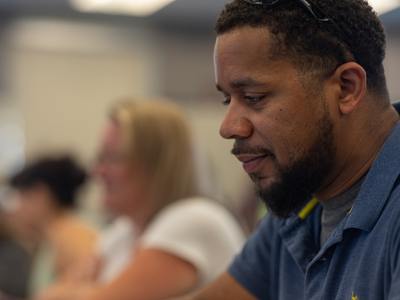Next-gen nursing education: smarter tools, stronger skills
May 11, 2025

Across higher education, there has been a growing recognition that how students learn is just as important as what they learn. Research in the science of learning indicates that learning is most effective when it is active, personalized, and grounded in hands-on experiences. As a result, educators have been challenged to rethink traditional teaching methods that rely on in-person lectures and textbook reading, in favor of a more flexible, engaging approach that has been proven to support deeper understanding and long-term success.
In nursing education, this shift has been especially important. Nursing graduates need more than just knowledge—they need confidence, clinical judgment, and the ability to adapt in high-stakes environments. In 2021, the American Association of Colleges of Nursing released a new set of national guidelines, known as the Essentials, which outline the core competencies nursing graduates should demonstrate at every level.
In response to these updated standards and informed by evidence on how students learn, the VCU School of Nursing launched a comprehensive redesign of its undergraduate and graduate curricula. In addition to reshaping course content, the school has adopted a suite of modern learning tools and technologies that aid in delivering the new curricula.
These new tools will complement and build on what students learn through traditional textbooks and lectures to support active, personalized, and hands-on learning. These tools let students work with things like interactive videos, virtual patient scenarios, digital health record practice, and case-based activities that reflect real-life clinical situations.
This evolution is not about adding more to the curriculum—it’s about making learning more meaningful to each student. Here’s an overview of some of the innovative tools and technologies now integrated into the program.
Elsevier Sherpath
First-year nursing students now receive a digital learning package as part of their textbook bundle. This includes access to Elsevier Sherpath, an online platform that includes a digital version of their textbooks, as well as access to other tools like Shadow Health and Osmosis (more below). The platform also features adaptive quizzing, which uses NCLEX-style questions to assess student mastery, tailoring questions to help reinforce areas of weakness and solidify their understanding of key concepts. Interactive lessons are also included, transforming textbook content into engaging learning experiences with built-in knowledge checks.
Osmosis
Osmosis, one of the learning tools offered through Elsevier Sherpath, is a visual, student-friendly platform that breaks down complex topics into short videos, flashcards and quizzes. It supports different learning styles with self-paced study tools and helps students review challenging material. This tool also prepares students for clinical practice and exams like the NCLEX and supports a flipped classroom model, where students learn new content on their own and then use class time for deeper discussions, problem-solving, and hands-on activities.
Shadow Health
Shadow Health, another Elsevier Sherpath offering, gives students a safe, virtual space to practice working with lifelike digital patients. These simulations help them build confidence by asking clinical questions, making decisions, and sharpening their diagnostic skills—without the pressure of working with real patients. It’s often used in conjunction with simulation labs and in the lead-up to clinical hours, helping students bridge the gap between classroom learning and real-world practice, easing students into a clinical setting for the first time.
EHR Go
EHR Go lets students practice using the electronic health records that nurses rely on every day. It gives them hands-on experience with charting patient care, tracking health data, and managing cases as they evolve. This helps students strengthen both their clinical and documentation skills—two things every nurse needs to master. Plus, it encourages patient-centered thinking by having students make decisions based on full health histories and progress notes.
Oxford Medical Simulation
Oxford Medical Simulation, scheduled to launch in the undergraduate curriculum in fall 2025, lets pre-licensure students dive into real-life clinical scenarios in a virtual setting, either on a screen or using a VR headset. These simulations cover both everyday and high-stakes situations that nurses might encounter, like patient deterioration, medication errors, or emergency response. Students can practice critical thinking, communication, and prioritization in real time. Paired with in-person simulation in the Clinical Learning Center, this tool helps students make the most of their time in the classroom and expand the range of situations they will experience in clinical settings. Students can also repeat scenarios multiple times after their initial encounter to build confidence in their abilities.
Symptom Media
Designed for use in graduate-level programs in advanced nursing and mental health specialty areas, Symptom Media is an online film library focused on mental health education and training. It offers a collection of videos, simulations, and case studies, including those based on DSM-5 (the Diagnostic and Statistical Manual of Mental Disorders, 5th Edition) and ICD (the International Classification of Diseases) guidelines, which are used to help diagnose mental health conditions. These tools help students and professionals better understand mental health diagnoses and improve their clinical skills. Instructors can assign videos that showcase real-life scenarios—like therapy sessions or crisis interventions—without immediately revealing the diagnosis. Students then practice watching, assessing, and thinking critically, just as they would in clinical settings. The library covers a wide range of topics, including trauma, substance use, and teletherapy, while also aiming to reduce the stigma surrounding mental illness through realistic portrayals of conditions.